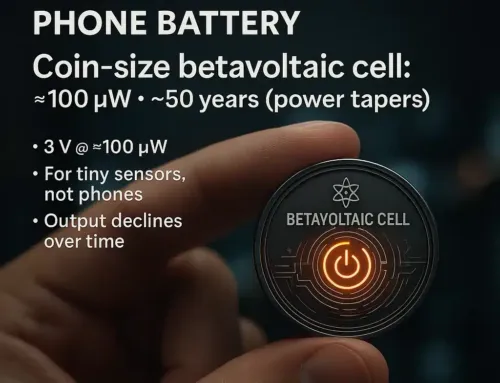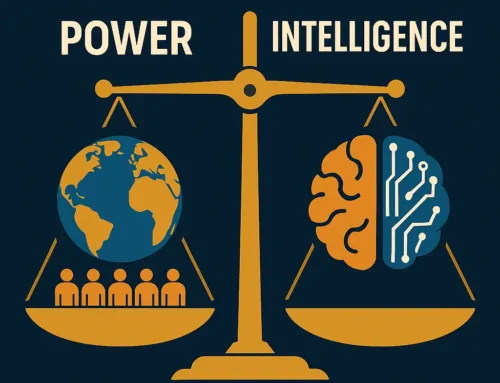
Approx. read time: 10.8 min.
Post: China’s Rare Earths Weapon Could Kill Europe’s Auto Industry
China’s Rare Earths Weapon Could Kill Europe’s Auto Industry
Earlier this year, China introduced new restrictions on its exports of rare earths — a subtle yet powerful escalation in its ongoing economic battles with the West. The move didn’t just mark a new phase in the U.S.-China trade conflict; it signaled a shift from tit-for-tat tariffs to weaponized control over critical supply chains. The implications are severe, not only for the United States but also, and perhaps more dramatically, for Europe.
Rare earths are the lifeblood of modern technology, essential for everything from smartphones to missile guidance systems. But it’s in the auto industry — especially the electric vehicle (EV) sector — that their absence is likely to do the most damage. Europe, already grappling with high production costs, slow EV profitability, and stringent emissions targets, could see its car manufacturing base hollowed out. The reality is stark: no rare earths, no EVs. And no EVs, no future for Europe’s auto industry.
China’s Rare Earths Dominance
China controls approximately 90% of global rare earths processing capacity. While other countries have rare earth deposits, processing the ores into usable materials is technologically complex, environmentally hazardous, and capital-intensive. China invested early and aggressively in this industry, not just mining the elements but building out a sophisticated supply chain for refining and magnet production. As a result, it became the gatekeeper.
This dominance isn’t new, but what has changed is how China is wielding it. In April, Beijing rolled out a new export licensing regime for rare earth magnets. It wasn’t an outright ban, which would have triggered international trade complaints. Instead, it created a deliberately slow, opaque, and burdensome process for foreign buyers. Companies now need to apply for licenses, disclose sensitive corporate data, and wait. For some, the wait has no end in sight.
According to Bosch, one of Europe’s leading auto suppliers, the new application process is “complex and time-consuming.” Only a handful of companies have successfully navigated it. Most are stuck in limbo, unable to secure the materials they need to build components ranging from electric motors to advanced sensor systems.
The Auto Industry’s Quiet Panic
The Alliance for Automotive Innovation, which represents major global carmakers like Volkswagen, Toyota, and General Motors, sent an urgent letter to the U.S. government back in May. They warned that without access to rare earth magnets, their entire production lines could grind to a halt.
“Carmakers will be unable to produce critical automotive components,” the letter read, listing everything from transmissions to power steering systems.
That was just the beginning. In Europe, the situation is worse. While the U.S. under the Trump administration took steps to back away from EV mandates, Europe doubled down. Brussels imposed aggressive emissions targets and mandated minimum EV production quotas. Carmakers now face stiff penalties if they don’t meet these goals. But the EVs they must build rely heavily on rare earth materials.
Electric vehicles require more rare earths than traditional internal combustion engine (ICE) cars. Motors, battery components, regenerative braking systems, and advanced driver assistance features all depend on these scarce elements. Without them, manufacturing even a single EV becomes impossible. The EU didn’t just make EV production a strategic priority; it made it non-negotiable. Now, that rigidity may come back to bite.
Trade as Warfare
The shift from tariffs to supply chain manipulation marks a dangerous new chapter in global trade relations. China isn’t just responding to U.S. sanctions or EU technology restrictions. It’s broadcasting a message: if you try to contain us, we will leverage our strategic resources to contain you.
European Trade Commissioner Maros Sefcovic recently acknowledged the gravity of the situation. Speaking to the Financial Times, he warned of “huge production difficulties in a short period of time” and called the rare earth shortage “extremely disruptive for industry.” This isn’t hyperbole. It’s a slow-moving catastrophe.
This kind of strategic leverage mirrors what the U.S. has done with the dollar. Washington has long used its control over global financial systems to enforce sanctions and isolate adversaries. Now Beijing is applying the same logic, not through banking systems but through physical materials. And because there are no quick substitutes for rare earths, the leverage is real and immediate.
An Industry Already on the Brink
Europe’s car industry has been under stress for years. Margins have thinned, regulatory burdens have risen, and competition from Asia — especially China — has intensified. The shift to EVs was supposed to be a renaissance, a way for legacy automakers to reinvent themselves. Instead, it has become a massive capital sink with little short-term return.
Most European automakers are still struggling to turn a profit on their EV lines. Developing EV platforms, building battery plants, and upgrading factories requires billions in upfront investment. At the same time, consumer adoption remains uneven, especially in markets without strong subsidies. Now, with rare earth supplies under threat, even producing EVs is becoming an operational gamble.
This is not just a question of lost profits. It’s a question of survival. Without access to critical components, assembly lines will stall. And in a global industry where every hour of downtime costs millions, the impact will be swift and brutal. Layoffs, plant closures, and bankruptcies are not speculative. They’re imminent if the supply crunch persists.
Why the West Didn’t Prepare
The rare earths crisis was not unforeseen. Policy experts, industry analysts, and even intelligence agencies have been warning about supply vulnerabilities for over a decade. Yet, concrete action was minimal. The reason is simple: rare earth processing is dirty, politically unpalatable, and not immediately profitable.
Mining and refining these elements produce toxic waste and radioactive byproducts. Opening new processing plants in Europe or North America would trigger fierce environmental opposition. Even when such efforts have been proposed, they have stumbled over permitting delays, local protests, and a lack of investment.
China had none of those constraints. It subsidized its rare earths industry, accepted the environmental costs, and allowed its companies to flood the market at low prices. Western firms couldn’t compete. So, instead of building their own infrastructure, they outsourced and hoped for the best.
Now, the bill is due.
Can the West Catch Up?
Rebuilding a rare earth supply chain outside China is possible — but not quickly. It takes years to open a new mine, build a processing facility, and scale production. Even under the most optimistic timelines, Europe and the U.S. are five to ten years away from meaningful independence in rare earths.
There are some promising signs. The European Union has launched the European Raw Materials Alliance to reduce dependency on China. The U.S. has tapped domestic projects in states like California and Texas. Australia and Canada are also ramping up efforts. But progress is slow, and current output is negligible compared to China’s.
The real danger is that by the time alternative supply chains come online, it may be too late for parts of Europe’s auto sector. The damage from prolonged disruptions could be irreversible. Once a plant shuts down, it rarely reopens. Once skilled workers are laid off, many don’t return. Once a supplier loses a contract, the customer doesn’t always come back.
What Needs to Happen Now
To avoid a worst-case scenario, European governments must act immediately. That means:
1. Fast-tracking domestic rare earth projects
Streamline permitting processes, subsidize research, and offer incentives to companies willing to build capacity.
2. Strategic stockpiling
Just as countries hold reserves of oil, they should begin accumulating rare earth elements to buffer short-term shocks.
3. Allied supply chains
Partner with like-minded nations (Australia, Canada, Japan, the U.S.) to create a secure, diversified pipeline of critical materials.
4. Rethink EV mandates
Regulations should reflect geopolitical realities. If rare earth shortages make current targets unfeasible, those targets must be adjusted to prevent industry collapse.
5. Invest in recycling
Rare earths can be recovered from used electronics and decommissioned EVs. This is not a silver bullet, but it could help reduce fresh demand.
Conclusion: Dependency Is a Strategic Risk Europe Can’t Ignore
China’s decision to tighten controls on rare earth exports isn’t just a trade maneuver. It’s a geopolitical warning shot—one that exposes how vulnerable Europe has become in an era where supply chains double as battlegrounds. What once seemed like a smart economic strategy—outsourcing, offshoring, specializing—has now become a glaring strategic liability.
For Europe, this dependency is especially dangerous. The continent’s industrial backbone is built on automotive manufacturing. It employs millions, fuels exports, underpins regional economies, and is deeply tied to national identities in countries like Germany, France, and Italy. Now that foundation is cracking under pressure from a single point of failure: access to critical raw materials that are almost entirely processed in China.
The shift toward electric vehicles, which the EU has mandated through aggressive climate policies, was supposed to future-proof the auto industry. But the transition has been rushed without securing the supply chains needed to support it. Rare earth elements are essential not only for EV motors but also for advanced driver assistance systems, safety features, infotainment, and battery management. Without them, the cars of tomorrow simply can’t be built. Yet Europe produces almost none of these materials, and processes even less.
This crisis isn’t theoretical. It’s already unfolding. Auto manufacturers and suppliers are warning of production delays and potential plant closures. Job losses aren’t years away—they’re potentially months away if rare earth access continues to be throttled. And it’s not just EVs that are at risk. ICE vehicles and hybrid models also rely on these materials. The entire sector, from small parts suppliers to global OEMs, is in jeopardy.
What’s more troubling is how little room for maneuver Europe has in the short term. There are no ready alternatives to China’s rare earth processing capabilities. Building a domestic or allied supply chain will take years, possibly a decade. And while political leaders have talked about the need for “strategic autonomy,” real investment and regulatory reform have been slow to follow. Time is running out.
This is more than an economic issue. It’s a question of sovereignty and resilience. Just as energy dependency on Russian gas created a strategic crisis in 2022, raw materials dependency on China is now doing the same in 2025. The warning signs are flashing, and the stakes are arguably higher: Europe’s ability to maintain its industrial base, lead in clean technology, and compete globally all hinge on this single vulnerability.
The rare earths bottleneck should be a turning point—a moment that forces Brussels and national governments to move from rhetoric to action. That means cutting red tape for domestic mining and refining projects, investing in recycling infrastructure, and forging deeper partnerships with trusted allies that have untapped reserves.
Strategic dependency is a slow-burning fuse. But if Europe doesn’t move decisively now, it may wake up one day to find that its auto industry—the pride of its economy—has been outmaneuvered, outsourced, and overtaken. The price of inaction isn’t just economic stagnation. It’s industrial decline. And once that slide begins, it’s nearly impossible to reverse.
The fallout from China’s rare earth export restrictions won’t stop at Europe’s borders—it’s already reverberating across North America, especially in Canada, where the Big Three automakers—Ford, GM, and Chrysler (Stellantis)—maintain critical manufacturing operations. Plants in Ontario depend on a steady flow of components that contain rare earth magnets used in EV motors, power steering, sensors, and infotainment systems.
Suppliers like Magna International and Lear Corporation, both deeply integrated into the North American automotive supply chain, could face severe material shortages or cost spikes that threaten production schedules. For Magna, which produces everything from drivetrains to seating systems, the inability to secure key rare earth elements could stall output across multiple tiers of its operations.
The same goes for Lear, whose advanced seating and electronics are tied to vehicle innovation—particularly in EV models. If the supply chain remains bottlenecked, Canada’s role as a stable, high-tech manufacturing base for the auto industry could be compromised, triggering ripple effects in jobs, exports, and investment.
Related Videos:
Related Posts:
From Dust to Life: The Convergence of Biblical Creation and Modern Science
Popular programming languages, industries, job roles, and salary trends 2024
Europe’s Heat Pumps Put America’s to Shame: How Stockholm’s Massive Systems Are Leading the Way
Europe’s Muslim Integration: A Journey of Challenges and Opportunities
Tesla Autopilot stopped for a rabbit on the road
Navigating the Risks: TikTok’s Ban in the USA and Canada Amid Espionage Concerns









